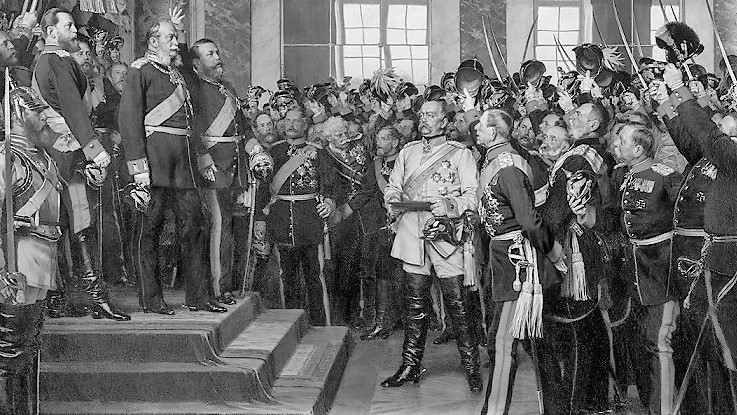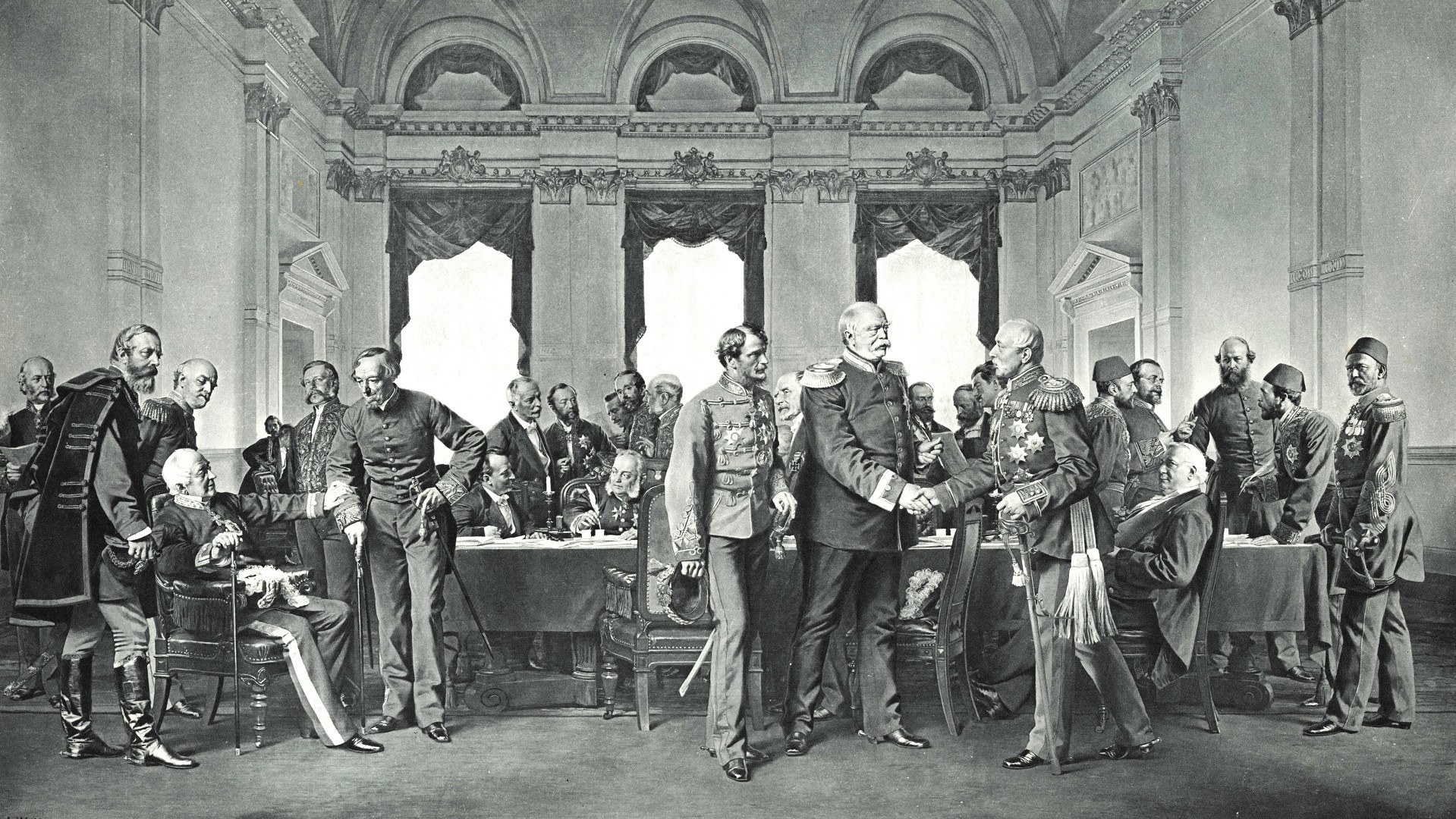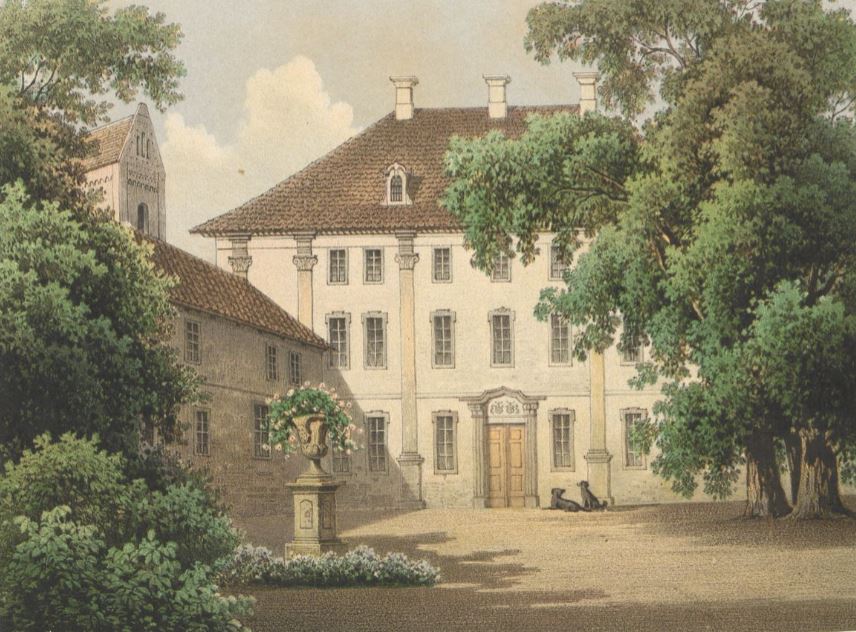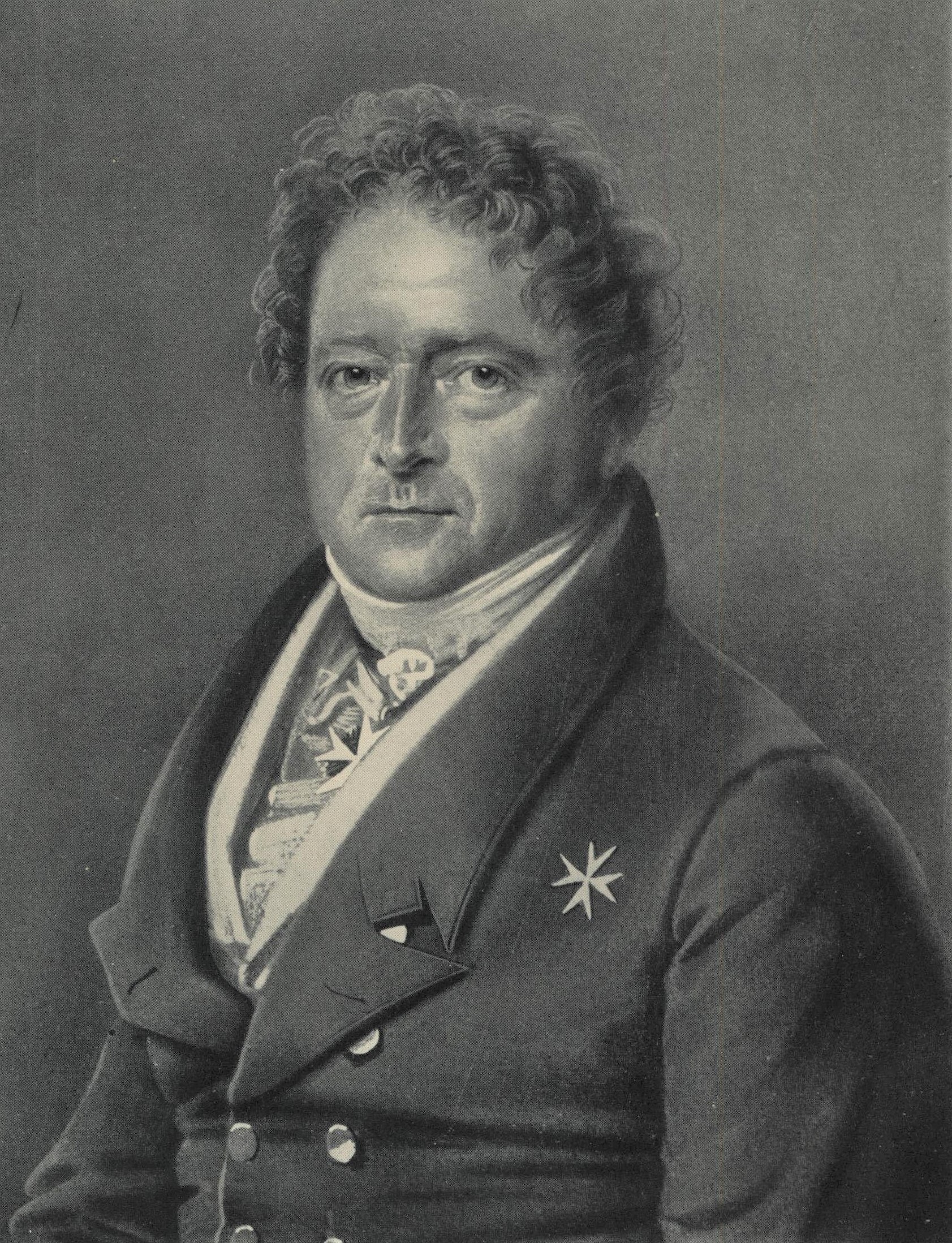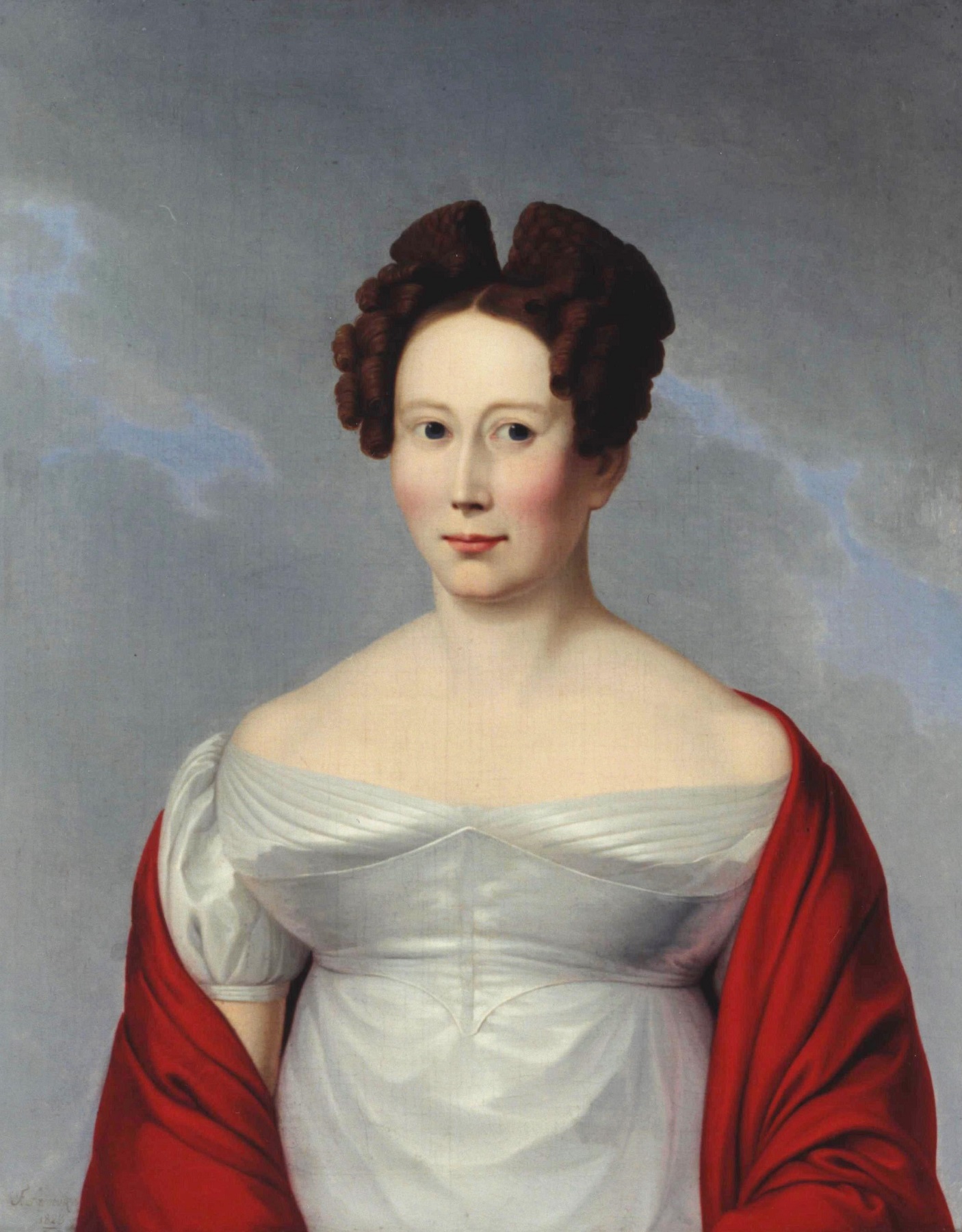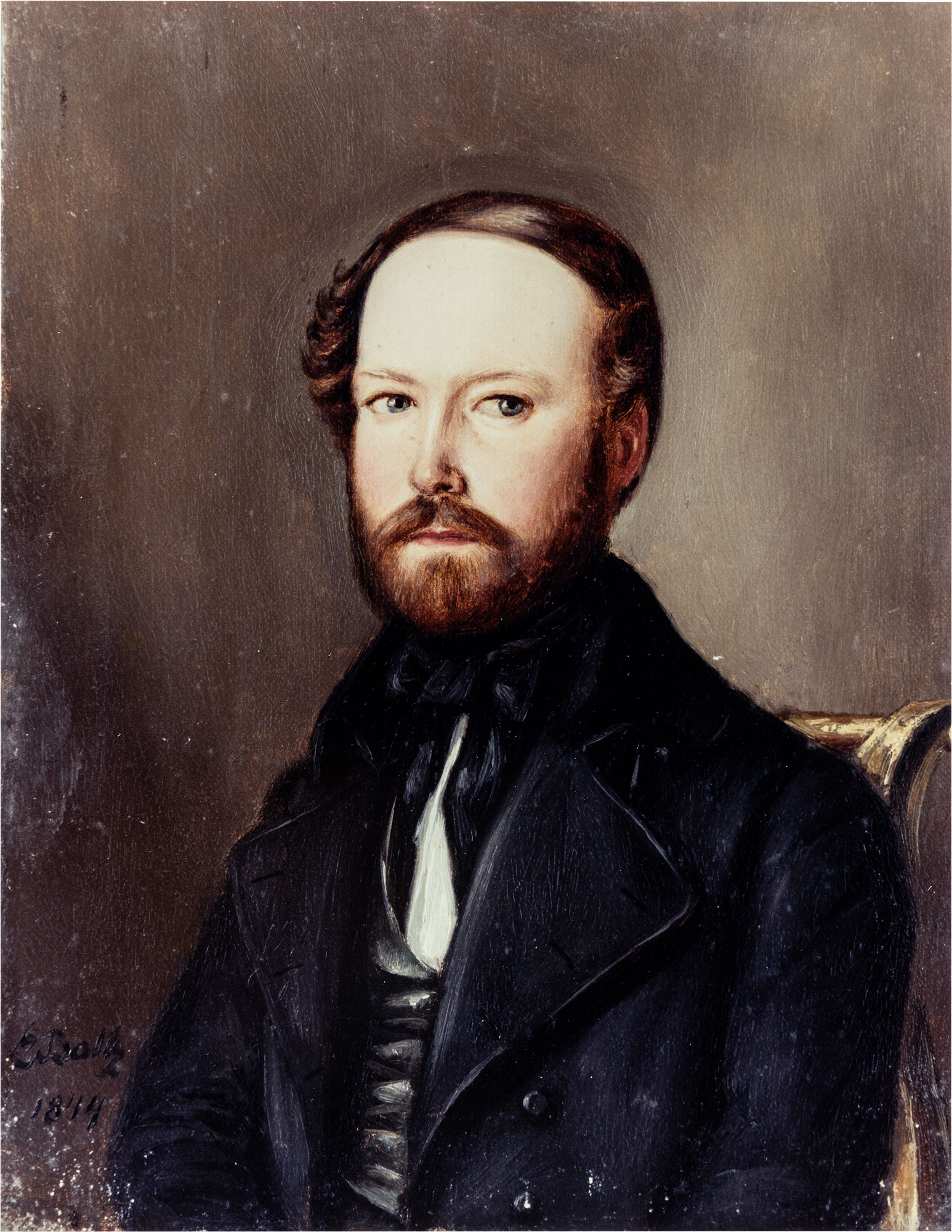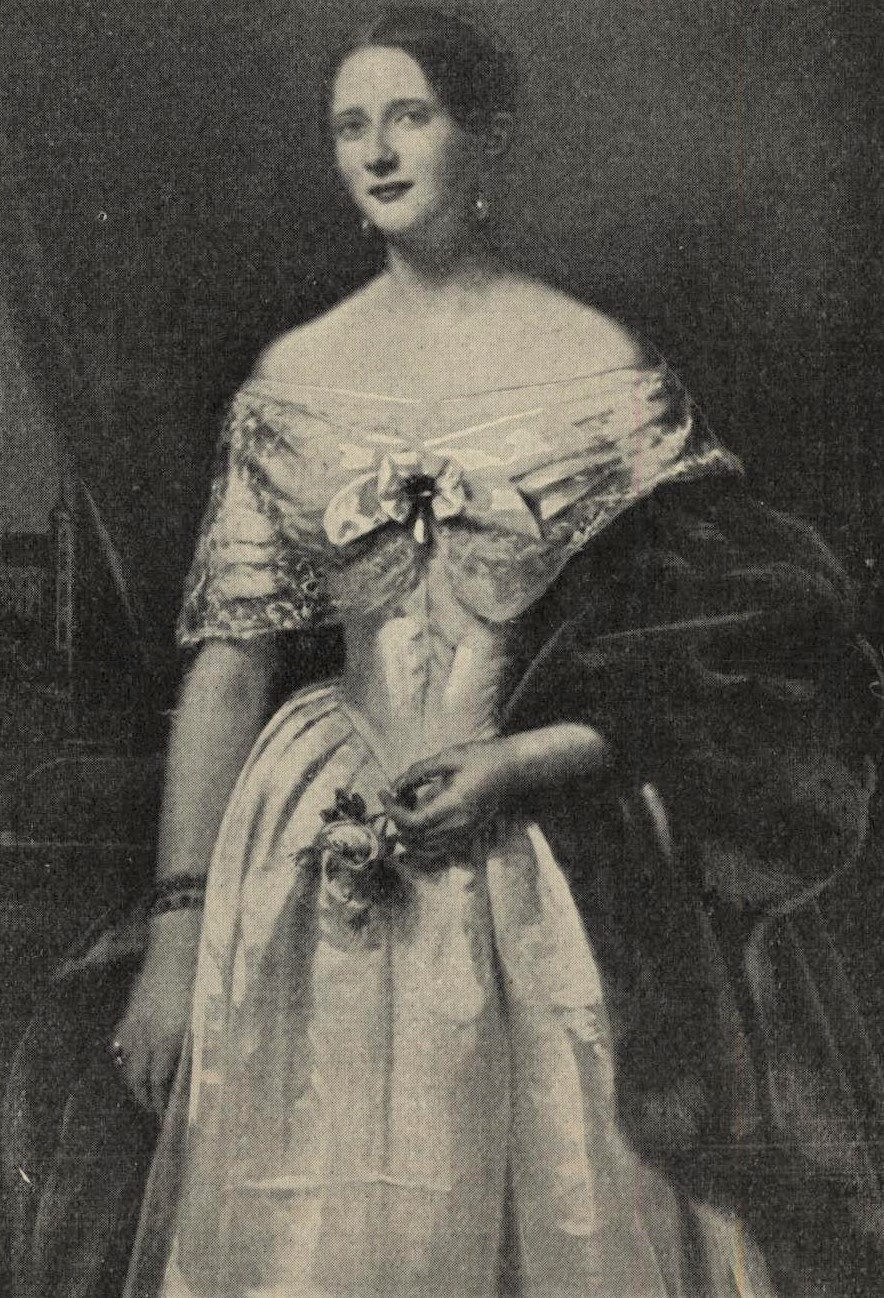The worlds of childhood
Parents and siblings
of Otto von Bismarck Bismarck's childhood and youth were shaped by the different backgrounds of his parents. His father, Ferdinand von Bismarck , came from a rural noble family in the Old Mark Brandenburg, while his mother, Wilhelmine Luise von Bismarck , was the daughter of an old family of scholars in the service of Prussian kings. The tensions between a secluded rural existence and proximity to the court in the city, between a sense of tradition in the estates and enlightened education, were reflected in Bismarck's difficult relationship with his parents. Throughout his life, he felt more attached to his father's aristocratic, manorial existence. But his father's simple good-naturedness and passive, sometimes indolent way of life did not provide Otto von Bismarck with the male role model he wanted. Both parents died before he began his political career.
Ferdinand von Bismarck (1771 – 1845)
Ferdinand von Bismarck grew up together with three older brothers on the Schönhausen estate of his father Karl Alexander von Bismarck ). Following the aristocratic tradition, he entered military service at school age and fought in the First Coalition War against France. As early as 1795 he submitted his resignation and returned to Schönhausen. There he helped his father on the estate, which he took over after his father's death in 1797.
As a lord of the manor and at that time still a simple lieutenant (ret.), he did not have any contacts with the royal court worth mentioning. Through the mediation of his brother, he became acquainted with the Mencken family of court officials in Potsdam. He increased his social standing enormously by marrying into this family in 1806. In 1816 he moved with his family to the Kniephof estate in Pomerania, which he had acquired cheaply from a relative, and left the management of Schönhausen to an inspector. He only returned to the Altmark shortly before his wife's death in 1838.
Wilhelmine Luise von Bismarck, née Mencken (1789 – 1839)
The dominant parent in Otto von Bismarck's childhood and youth was his mother. At the age of only 17, Wilhelmine Luise Mencken married Ferdinand von Bismarck, a country squire more than twice her age - probably at the request of her middle-class family. She was the daughter of Anastasius Ludwig Mencken, an educated and politically influential cabinet councillor under the Prussian kings Frederick William II and Frederick William III. By marrying into the landowning nobility, she achieved further social advancement. Unlike her husband, she had enjoyed a comprehensive education and had grown up in culturally demanding and learned Potsdam circles with frequent contacts with the Prussian royal family. Accordingly, she felt uncomfortable in the seclusion of her husband's country estates and often stayed away from the family on spa trips.
Against the background of her own upbringing, she aspired to high civil service or diplomatic careers for her sons Otto and Bernhard and therefore ambitiously pushed ahead with their schooling and education in Berlin. Otto started school there at the age of six and suffered from the separation from the familiar environment of the family estate. Although she had laid the foundations for his political career through her educational aspirations, throughout his life he perceived her above all as cold, hard and strict.
Bernhard von Bismarck (1810 - 1893)
"His death always tears a hole in my life and in my surroundings, even though I was more conscious than physically aware of my brother's existence," wrote Otto von Bismarck in 1893 in mourning for his deceased brother Bernhard, who was five years older. They had spent the first years of their lives together on their parents' estates in Schönhausen and Kniephof in Pomerania. Bernhard von Bismarck attended Plamann’s School in Berlin, and his younger brother Otto followed him a little later. During their secondary school years, both lived in their parents' city flat at Behrenstraße 53 for two and a half years.
Bernhard studied law in Berlin and Leipzig from 1829 to 1831. He completed his legal traineeship in Potsdam in 1836. When his mother fell seriously ill in 1838, he and his brother Otto decided to jointly manage the Jarchlin, Külz and Kniephof estates in Pomerania. To settle the inheritance matters, Bernhard first moved into the family estate and successfully began consolidating the farming business. From 1839, the brothers jointly administered the estates until they were divided up in 1841. During this time, Bernhard was an important "friend and confidant" (Ernst Engelberg) to his unsteady brother. In 1840 he became a deputy in the Provincial Diet of the Province of Pomerania and district administrator of the Naugard district.
He was one of the promoters of the conservative Neue Preußische Zeitung ("Cross Newspaper"), in which Otto von Bismarck also participated. In 1851/52 and from 1870 to 1888 he was a member of the Prussian House of Representatives. After the early death of his first wife Friederike Fanninger, with whom he had two sons, he married Malwine von Lettow-Vorbeck. They had twelve children.
Malwine von Arnim-Kröchlendorff, née von Bismarck (1827 – 1908)
Otto von Bismarck had a close relationship with his sister Malwine, who was twelve years his junior. After he and his brother divided the Pomeranian estates between them in 1841, she ran his household at Kniephof for three years. In 1843 she became engaged to Otto von Bismarck's childhood friend Oskar von Arnim-Kroechlendorff. After their marriage in 1844 they moved into his estate Kröchlendorff in the Uckermark. The marriage produced three children.
Otto von Bismarck and his sister exchanged numerous letters about private matters and politics. Both resembled each other: they were considered clever and rational, but also mocking and sometimes eccentric. Unlike her sister-in-law Johanna von Bismarck , Malwine von Arnim attached importance to an attractive and elegant appearance in aristocratic society. In matters of dress, Otto von Bismarck recommended her to his wife as a role model and advisor.


